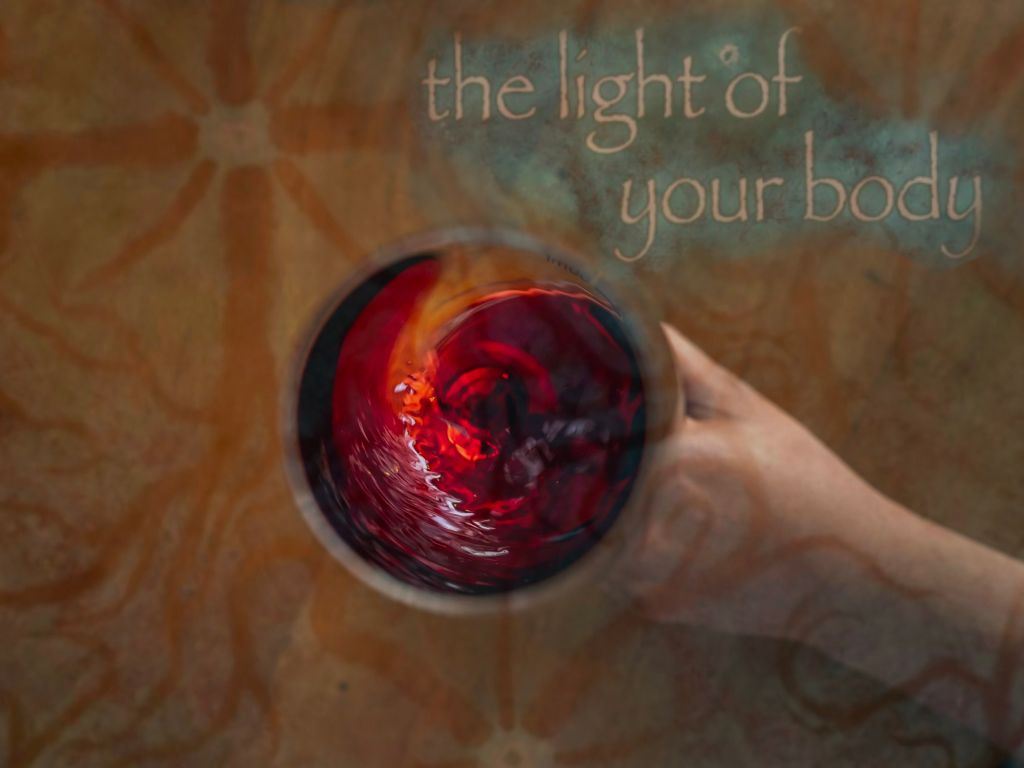love letter to the tlaquetzqui: a conversation on the short stories of ire’ne lara silva in the light of your body

Words cannot begin to describe the life-giving force that is the light of your body by ire’ne silva. This essay is merely my humble attempt.
It’s a Saturday night, and like any weathered graduate student, I spend my evening on the sofa with a glass of red wine and a book in hand. A gorgeous blue book: the light of your body. ire’ne lara silva writes sixteen short stories of love, loss, healing, and unraveling—the beauty of our humanity. the light of your body opens with a beautiful story from the perspective of a tlaquetzqui, a storyteller. Stories are the center of our world, and silva immediately opens our eyes to that reality. The tlaquetzqui is a beautiful and burdening role, one that silva embraces. When we tell stories, we’re doing more than detailing a beginning and end. To be a tlaquetzqui is to see beyond the confines of time and space. From performing sobadas to holding an olla of her ancestors’ tears, the tlaquetzqui is a necessary intercessor between human reality and all that exists beyond our understanding.
Like the thoughtful tlaquetzqui she is, silva places this story at the very beginning of the collection, blessing the reader with the eye of a storyteller and the ability to shift our perspective to things bigger (and more important) than ourselves. She writes, “Really, I think that’s what everything is made of. The sunlight is a story the sun tells. The night is a story the stars tell. Trees and flowers and grass are stories the earth tells…Love is trusting someone with your stories and holding someone else’s stories.”
As silva suggests, to be a tlaquetzqui is to be more than a vessel that emits stories. No—to be a tlaquetzqui is to hold stories out of love. silva emphasizes love as the purpose for our very existence—the love of family, friends, lovers, food, sex, culture, religion, history. silva laces each word, each story, with an immense, unexplainable love. It seeps through every page of the book. According to silva, the love of storytelling–or the love that spreads as a result of storytelling–makes medicine. This is the gift of the tlaquetzqui: stories make medicine with whatever ingredients are needed to carry the listener forward.
I was presented this gift when I read “Los Oscelotes del Norte,” my favorite story in the collection. “Los Oscelotes del Norte,” the ninth story in the collection, follows a conjunto that makes their way to The Small World after their passing from The Big World. I think most people forget that músicos are also tlaquetzquis. silva wonderfully articulates this point: “there was never anything like what it felt like to hold that accordion in my arms. To squeeze out the sounds of a limping, pealing, bleeding heart.” I’m a poet, and the words that flow from my pen ooze from my heart in the very way that silva describes. Tlaquetzquis really do take many forms.
I’ve been writing for as long as I can remember, but it wasn’t until the past year that I considered birthing my words before the world. Putting pen to paper has always been a natural instinct of mine. The pen is my sword. I write to survive—un producto de la facultad. I have a keen sensitivity to every encounter, writing down the words I wish I could release and cursing the words I have spilled. Naturally, I’m known as la dramática in my family. Little do they know, I carry them beyond my bloodline and into my heart. Into my stories. My stories are where I understand our past, sit in our present, and envision all our futures. I took on the role of a tlaquetzqui before I even knew it.
By this point in the night, I’m one-hundred and twenty-four pages into the light of your body, teary-eyed and feeling unreal. My mind’s eye becomes that of a tlaquetzqui, and I find my soul operating on a different plane. I understand it all. I don’t know if it was the references to the music of my childhood or the red wine starting to kick in (maybe a mixture of both?), but I felt a wave of admiration come over me. I am enamored with silva’s stories and their original, yet perfectly nostalgic, takes on our existence. the light of your body has the distinct touch of a tlaquetzqui in that you come out of the reading a different person, as if silva performed a literary sobada: touching you, healing you with her words.
In her final story, “prophecy,” silva outlines a vision of balance being restored in the world. In this prophecy, “life was only what was given and received in gratitude.” In all that the light of your body gives to its readers, it’s an understanding of gratitude. This is where we find the purpose of a tlaquetzqui. Storytelling is the vehicle in which gratitude exists and spreads. The tlaquetzqui stitches the elements of her story together in a way that appreciates humanity, threading every listener’s heart to her own. To express gratitude is to honor the thread by which we are connected to the tlaquetzqui, remembering her stories forever.
The sweet aroma of red wine carried over from Saturday evening to that blessed Wednesday night—the night I heard silva read. Like the wine from the night I first read her work, silva’s words made me feel drunk. Drunk on love. Drunk on life. Drunk on everything that makes us human. She read her poetry and excerpts from the light of your body. Then, she talked about her life, and brought me to tears yet again. Her story is just as beautiful as the stories she writes. I began to see myself in her–or rather, the person I would like to become. ire’ne silva is a light on this earth. A tlaquetzqui in her true form.
ire’ne, if you’re reading this, you owe me a bottle of red wine.


